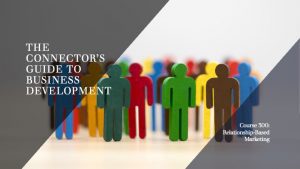How to Create a Business Development Budget
Part of developing a business development strategy is setting aside the budget to carry it out.
How Much Should You Spend?
Established firms with strong referral networks can get away with allocating 10% of revenues toward client acquisition. Newer firms should expect to spend more, perhaps 15% to 20% of revenues. So, a firm that generates about $100M in revenue, should spend about $10M per year on client acquisition, which includes marketing and sales expenditures.
Ten percent, in raw dollars, can be a lot of money. However, research shows that if you are not spending that much on client acquisition, you are not fully exploiting your advantage, and are, therefore, likely leaving a lot of revenue on the table.
How Exactly Should the Funds Be Spent?
Business development spending falls into three broad categories: staffing, message or brand awareness spending, and conversion spending. Naturally, staffing will be your largest business development expense. Staffing includes your internal business development and marketing teams.
You also need message spending; that is spending to generate and promote brand awareness within your client profile. Common examples of message spending include:
- your website,
- printed materials such as brochures and business cards,
- sponsorship of charitable and sporting events,
- meal and entertainment expenses including a box for a sports team, lunch meetings, conference fees and travel expenses, branded client appreciation events,
- paid advertising including social media campaigns,
- email marketing platforms such as mailchimp, and
- membership fees for associations, Chambers of Commerce, referral groups, and the like.
Finally, you need conversion spending; that is spending to earn revenue during the prospect’s current purchasing cycle. These selling expenses include:
- CRM software,
- research software known as business intelligence platforms used to qualify leads and prepare for sales appointments,
- referral fees and other partner program expenses,
- sales training platforms and in-person services
- sales coaching and consulting services,
- sales-specific travel, and
- merchant account fees and other banking fees.
There is no one size fits all allocation between message spending and conversion spending. You probably have a pretty good idea of where your firm stands and where you want it to be in the next few years. Let that be part of your guide.
When Is the Best Time to Spend?
The best time to allocate the budget is after you have developed a business development strategy including how you intend to promote your brand to your client profile, the specific clients you intend to pursue in the coming year, the lead generation tools you intend to deploy in those pursuits, your internal staffing needs relating to business development, and any external expertise you deem necessary to achieve the outcomes set forth in your firm’s business development strategy document.
Leave a little slack in your budget to be able to pivot if your strategy isn’t working. Also, new technologies emerge almost weekly. You don’t want your coffers to be bare when the next big thing becomes available.











No responses yet